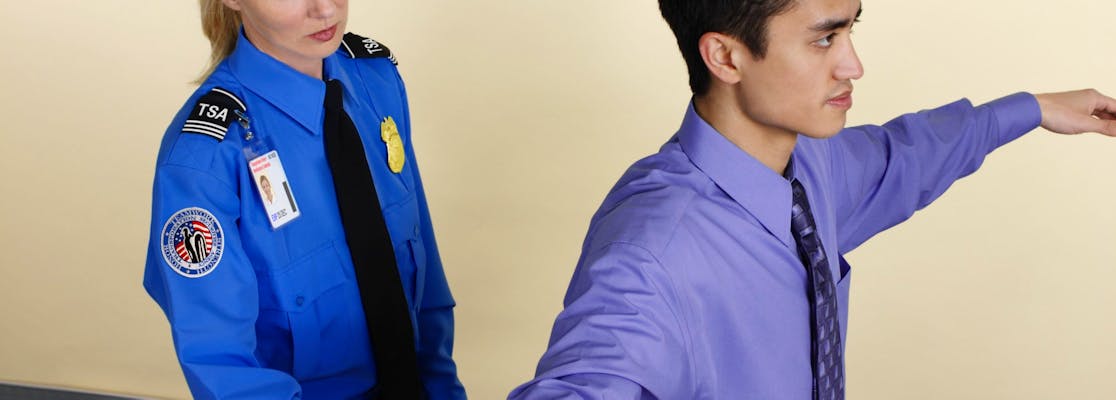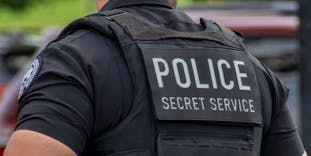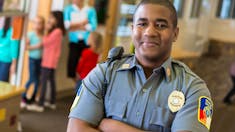The TSA CBT Test (2025 Guide)
Updated November 18, 2023
About the TSA
The Transportation Security Administration (TSA) is an agency under the direction of the US Department of Homeland Security and was set up in the wake of 9/11 to provide an authority over the security of the travelling public in the US.
There are a wide range of career opportunities with the TSA, and as a federal government role it can be a great option for employment.
Front Line Role: Transportation Security Officer
One of the roles that is regularly advertised for throughout the US is a Transportation Security Officer (TSO).
This is the front line of the TSA and involves screening baggage, cargo and passengers for dangerous or prohibited objects.
TSOs also control terminal entry and exit points, while communicating and interacting with the public, answering questions and providing directions when needed.
To become a TSA TSO, there are certain eligibility criteria that must be met. You must:
- Be a US citizen or national
- Be aged 18 or over
- Hold a high school diploma, GED or equivalent
- Have registered for Selective Service, where relevant
- Pass a federal drug screening, medical evaluation and background investigation
The application process to become a TSO takes about 90 days and once you have passed the tests and checks, you will be invited to an extensive, full-time training program at the TSA Academy.
To begin, set up a profile through USAJOBS and complete an application form and eligibility questionnaire.
If your profile matches the requirements, you will be invited to a test center to complete the TSA CBT, followed by an Airport Assessment, which comprises of a structured interview and fingerprinting.
To move forward, you will need to pass a medical evaluation, including tests on vision, hearing, color vision and adequate joint mobility, as well as a federal drugs test (including marijuana).
There will also be a background investigation, which will include disqualification for certain criminal convictions as well as delinquent debt.
Once all these stages are passed, you will be put into the ‘Ready Pool’ which means you are eligible for a job, depending on hiring needs.
You will remain eligible in the pool for one year after submission.
Practice the TSA CBT Test with JobTestPrep
What Is the TSA CBT?
The TSA CBT is a pre-employment screening test used as part of the standard recruitment process for roles in the TSA, specifically TSOs.
The Computer-Based Test (CBT) consists of two separate tests, both looking at different skills that are important to the role.
The first part of the test is known as the ‘X-Ray Test’ but more formally as Image Interpretation.
This is baggage scanning training, for the candidate to look at x-ray images and decide if there are any prohibited or dangerous items in the passenger’s luggage.
The second part is an English test, designed to assess your basic knowledge of English spelling, grammar and comprehension.
To progress in the recruitment process, the candidate must perform well on both sections of the test.
Why Is It Important to Prepare for the TSA CBT Test?
The TSA CBT is not particularly hard, yet only around 30% of applicants pass.
This is mainly because the image recognition task is not something that many people will have done before – and with a lack of knowledge about the technology, it can be difficult to find the right response.
Preparation for this test is the key to success – and with the knowledge of what the test is looking for, and familiarity with this slightly different pre-employment screening assessment, getting a coveted role and beating the competition will be so much easier.
Prepare for TSA CBT Test with JobTestPrep
What Does the TSA CBT Evaluate?
Part One: Image Recognition
This assessment is unique to the TSO position, although similar assessments are used for relevant roles in other countries and jurisdictions.
In the assessment you will be shown a number of images featuring an x-ray scan of an item of luggage. With just 15 seconds allowed for each image, you must identify a range of target objects that are forbidden according to the TSA rules.
The test is broken into five to six sets of 18 images. At the beginning of each set, you will be presented with the shapes of three to six items that you will need to memorize in 30 seconds, and on the following screen will be the images you need to assess and act on.
If there are prohibited items in the x-ray, then you need to select ‘hold’ for further investigations or ‘alarm’ for police intervention.
If no items are present, then you would select ‘pass’.
The images are a mix of dangerous and non-dangerous items, and sometimes the images can be complex as they might contain mixed items or things that are overlapped.
You might also have to identify items that could be disassembled.
Reading X-Rays
This is a skill in itself, and you might be presented with more recognizable black and white x-ray images or colored ones.
In the black and white images, contraband can be simple to see as the densest materials are darker.
For colored x-ray images, the different shades show different materials:
- Blue/Black – Hard materials, like metal, hard plastic and alloys including guns, sunglasses, wires and batteries.
- Green – Less dense alloys and plastics (if seen with blue/black shapes, might be a computer).
- Orange – Orange denotes biological materials. This can be liquids, foods and powders, but can also be rubber or leather. Non-plastic explosives and drugs will show up as biological too.
- Red – The least dense items in a bag will show up as red, including paper, fabric and cartons.
You may need to identify items like a gun in a backpack, which would need to be highlighted as containing a prohibited item.
During the Image Recognition section, you will have five minutes per set of questions, so speed is of the essence.
There is no negative marking, so it is a good idea to try and answer all the questions – even if it is a guess.
The pass rate for this portion of the test is low, and you might be asked to repeat it later.
Prepare for TSA CBT Test with JobTestPrep
Part Two: Writing Skills Assessment
This part of the test is to assess your basic English knowledge in three main ways – sentence correction, word meaning and reading comprehension.
These questions are multiple-choice and will not require more than a standard level of English knowledge, but it is worth brushing up on synonyms, antonyms, sentence structure and paragraph organization for the best results.

"There are many option for students that want to study law in the USA."
Select the required correction from the list below. If there are no corrections needed, select d).
a) Change many to most
b) Change option to options
c) Change students to student
d) No corrections necessary
If you need to prepare for a number of different employment tests and want to outsmart the competition, choose a Premium Membership from JobTestPrep.
You will get access to three PrepPacks of your choice, from a database that covers all the major test providers and employers and tailored profession packs.
What word is the opposite of soft?
a) Gentle
b) Floppy
c) Hard
d) Light
"There are many stages to the TSO application process, and it will take approximately 90 days to complete. All applicants must meet basic requirements before applying, such as being a US citizen or national and over the age of 18. The role requires shift working, so applicants should be prepared to be flexible about their hours."
Select the correct statement about this passage from the below:
a) TSO applications take less than a week
b) You can apply to be a TSO when you are 17
c) There will be no night working in this role
d) You must be a US Citizen or national to apply
No previous knowledge is needed in the reading comprehension, which is similar to the verbal reasoning assessments used in the recruitment process for other companies.
Scoring on the TSA CBT
During the test, there are no penalties for a wrong answer, so it is a good idea to try and answer every question.
If you pass, you will be placed in one of three categories:
- Best Qualified
- Highly Qualified
- Qualified
Those who are placed in the Best Qualified category is more likely to be given their choice of job and location, so performing as well as possible in the CBT will stand you in good stead for your future career.
How to Prepare For the TSA CBT in 2025
Step 1. Practice X-Ray Tests
As this is something that you will likely not have come across before, your practice really should focus on identifying shapes in luggage x-ray images.
With a 30% pass rate, this is considered the most difficult part of the assessment – but with practice, you can become more confident and achieve a better score.
There are image recognition practice tests online that are designed to mimic what you will face in the test, and these simulations are probably the most useful way to prepare yourself for the best result possible.
Step 2. Revise the List of Banned Items
The TSA has a comprehensive list available regarding what can and cannot be taken on a flight, making distinctions between carry-ons and checked luggage.
This is available on the TSA website in a simply searchable form, but the list of what cannot be taken in carry-on baggage includes such things as:
- Explosives
- Guns (including realistic replicas)
- Mace/tear gas
- Knives
- Corkscrews
- Metal chains
- Baseball bats
- Can openers
- Handcuffs
- Ropes
- Matches
- Alcohol above 70%
- Magnets
- Formalin
- Toothpaste
- Vinegar
- Formalin
- Lightbulbs
You do not need to memorize these for the CBT – you will be shown the shapes that you need to memorize in each set of images – but it is useful to bear in mind the weird and wonderful things that cannot be taken on a flight.
Step 3. Read the Instructions Carefully
Even with the practice that you have completed before you begin each stage of the TSA CBT, be sure to thoroughly read the instructions.
Not only will this help ensure that you know what you are doing in that section, but it will also give you some time to calm any anxiety and nerves so that you do not make mistakes.
This might be more relevant in the English skills part of the assessment, where you will have different actions to take in order to answer the question.
In the instructions you will also be reminded if there is a ‘no changes needed’ option in the multiple choice answers – which could help you make the right decision if you cannot see a mistake that needs rectifying.
Step 4. Take Your Time
This test is timed, and in the image recognition section particularly there is significant time pressure with only 15 seconds to decide.
Rather than rush to make the choice, make use of the time to be sure before you make the decision.
With five or six sets of 18 questions, you will have to get through up to 108 images in 30 minutes so bear in mind there is a time limit.
If you cannot make a decision, you have nothing to lose by making an educated guess – any answer is better than a missed image.
Step 5. Bear In Mind the TSA Principles
This is a useful tip for the whole recruitment process, not just the CBT – understand what type of person the TSA is looking for and use that knowledge when you are dealing with each stage of the application.
The TSA are looking for the following characteristics from their TSOs:
- A people person
- Dependable and adaptable
- Observant and detail-oriented
- Fast learner
- Early bird or night owl
- Focused and calm
- Good physical shape
- Comfortable in close spaces with others
Through the whole process, take any chance that you can to demonstrate these characteristics in yourself so that you are more likely to be selected as the 'Best Qualified'.
Prepare for TSA CBT Test with JobTestPrep
The Transportation Security Administration (TSA) Computer-Based Test (CBT) is a type of pre-employment screening test. It forms part of the standard hiring process for roles in the TSA.
If you are applying to work as a Transportation Security Officer (TSO), you will be required to pass the CBT test.
The CBT test is split into two sections: Image Interpretation (the X-Ray test) and English. To move forward to the next stage of the hiring process, you will need to perform well in both sections of the CBT test.
The questions on the CBT test for TSA are not difficult. However, only around 30% of applicants pass. This is usually due to unfamiliarity with the image recognition task or failure to read and understand the test instructions.
To stand the best chance of success, preparation is vital. This will help you become familiar with the test format and learn how to answer the questions.
The passing score for TSA CBT is not shared publicly. The TSA CBT is split into two sections – written and x-ray. The written section contains around 60 questions and the x-ray section contains around 100 images.
You will receive your results within a few minutes of taking the test. You will not lose points for answering a question incorrectly, so it is always best to make an educated guess if you’re unsure of an answer.
If you pass the test, you will be given a rating of Best Qualified, Highly Qualified or Qualified. The highest-scoring candidates will be rated as Best Qualified and are most likely to be offered their choice of role and location.
It is important to dress in formal clothing for the TSA CBT test. This will help to ensure a professional appearance during this stage of the hiring process.
To prepare for the TSA CBT, you will need to spend time completing practice tests. You may wish to dedicate additional time to practicing the image recognition element of the test, as this is something you are unlikely to be familiar with.
You should also revise the list of TSA banned items, practice reading the test instructions carefully and research the TSA principles. There are many helpful online resources to help you prepare for TSA CBT.
You will receive notification of your TSA CBT results within around 30 minutes of completing the test.
If you pass the test, you will be given a contingent offer. After passing the TSA CBT, you will need to pass through several other stages. These include a credit check, Personal History, Airport Assessment, Color Vision Test and medical/drug screening.
The Transport Security Administration test examines a candidate’s reading writing skills. There are a total of 50 to 60 questions, and candidates will be presented with multiple-choice questions.
There are two parts to the examination. The first part is image recognition. Candidates in this section will be shown several images from an x-ray scan. They must identify items and have just 15 seconds to identify the object.
The second section of the test is a writing skills assessment. Candidates will be presented with questions such as: sentence correction, word meaning, and reading comprehension.
The TSA CBT test is a pre-employment screening process that is used to find the most suitable candidates.
Although there are initial tests a candidate must take to take the TSA CBT test, those applying will have to fill out rigorous applications forms with USAJOBS.
On top of this, candidates will go through an airport assessment and a medical examination. The TSA CBT test is only one part of the job application. Such job applications are thorough because of the sensitive nature of the work and the importance of finding exactly the right candidates.
Although the TSA CBT test is not exactly an IQ test, it does require candidates to demonstrate abilities often associated with intelligence.
The first section will require candidates to analyze and identify objects from a series of x-ray images. This part of the test challenges a candidate’s perceptual analysis and cognitive abilities.
The second section is a comprehensions examination, and candidates will be tested on their reading and writing skills. The examination is straightforward, but only 30% of candidates pass the first time around. You must prepare thoroughly for the TSA CBT test.
After completing the TSA CBT test, you will have to wait around 30 minutes before you get your test results back.
Because it is an automated test, and so many people take the test, only general scores are outlined.
You will receive a notification on whether you have passed or failed. If you are interested in understanding where you can improve, then you can contact the Transport Security Administration for a breakdown of your results. To understand how where your weaknesses are, it is better to take practice examinations and analyze your results from these instead.
The Transport Security Administration test is a form of an aptitude test. Any aptitude tests that examine your logistical and mathematical abilities will help you prepare for the TSA test.
The second section of the TSA test is a comprehension examination. Any tests that examine your verbal reasoning skills and writing abilities are a good way to prepare for this section.
If you are looking for more specific tests to help you prepare, then the TSA test prep and the resources offered by Job Test Prep are good online websites. These resources are great to prepare for the X-Ray analysis section of the TSA CBT test.
The TSA CBT is a pre-employment screening examination, and so it is a compulsory part of a job application.
If you are applying for positions to do with transport security or operations, then it is likely that you will have to complete the TSA test. If you are unsuccessful and do not pass, you can take the test again in six months. There is no way of avoiding the test if you are applying for these types of positions.
There are plenty of guides and practice examinations for the TSA test. JobTestPrep is one of the most trusted sources to practice the CBT test.
You can also try Iprep Online which is a cheap alternative with a section dedicated to free practice. If you are looking for an alternative to these practice tests, then YouTube tutorials on the TSA test will give you a great insight into what to expect.
The TSA assessment is a pre-employment screening examination that is in transport security and transport operations.
If you are looking to work in an airport, you will likely have to take the TSA test.
The TSA exam measures potential candidates in two ways. First, it examines their spatial awareness. Image recognition and X-Ray analysis are fundamental skills needed by transport security staff. Second, it tests candidates on their verbal reasoning skills and writing abilities. You will need to take this test as part of any transport security administration application process.
As part of the application process, TSA candidates will need to undertake a medical evaluation and a drugs test.
The medical evaluation examines your hearing and physical well-being. The drugs test is a five-panel urine test which is a common procedure for government positions and private agencies.
The five-panel urine test identifies THC (cannabis), opiates, PCP, cocaine, and other amphetamines. On occasion, hair follicle tests and breathalyzers are also used in the TSA drugs screening.
The passing score of the TSA test is not publicly shared. It is therefore difficult to give an exact figure. Around 30% of people who take the TSA pass to the next round of the application process.
Instead of being given a raw score after completion, you will be put into one of three categories. Candidates are filtered into categories of best qualified, highly qualified, and qualified.
There was a report released after a DHS investigation in 2015. The report concluded that 95% of agents failed to identify an object that breached security protocols.
As a result of this, the TSA chief was removed from his post. Since then, security measures have been tightened and the tests have become more rigorous.
It is compulsory to take a TSA examination during the application process. In addition to this, the application process has become more selective.
Although it is easy to practice and revise for the TSA test, only around 30% of applicants pass the examination. You must be prepared for both sections of the TSA test.
On top of this, it is important to familiarize yourself with the format of the test. If you have not done an X-Ray examination before or any form of object identification, you will find the TSA test difficult.
There are two sections to consider for the TSA test.
The first part examines a candidate’s abilities to recognize images from an X-Ray scan. They will be given a scan of an item of luggage, and from this scan, they must identify each image within 15 seconds. In addition, they must also identify any objects that are forbidden according to the TSA rules.
The second section is a writing skills assessment. This section is like an aptitude test, but it is specific to a candidate’s basic verbal reasoning skills. They must correct sentences, identify facts from text, and identify the meaning of certain words.
'CBT' stands for 'computer-based test'. You will be answering questions online and they will be multiple-choice.
If you have the option to do the TSA test at home, then make sure that you just wear comfortable clothes. It is part of an application process, so do not put any unnecessary stress on your appearance.
If you are invited to take the test at an assessment center, then be sure you dress in a relatively smart manner.
You must prepare thoroughly for the TSA CBT test because you will only get two attempts to take the test.
If you fail on your first attempt, you will have to wait at least six months before you can take another test or process another application.
If you fail on your second attempt, you will not be able to take another test.
According to Indeed, there is a great range of earnings across different TSA positions.
For example, a transportation officer makes on average $39,696 per year.
In contrast, a transportation specialist makes on average $87,060 per year.
People working in these roles will be expected to work for eight to 12 hours per day. They may also have to be flexible with their locations as they may be asked to move to different airports or security centers.
People working under the TSA are considered to be federal employees, but there are some differences in rights and laws.
For instance, TSA officers do not have statutory Family and Medical Leave Act (FMLA) protections. Despite these specific stipulations, employees for the TSA have access to a range of benefits and privileges that other federal employees have.
They do not. The only employees that have access to free flights are flight staff. Transport officers do not fall under this category.
If you are a cabin crew member, a flight attendant or a pilot, then you will get access to free flights.
You may be asked to relocate to work in a different airport or security center. In this case, you may be able to get access to free flights, but this is dependent upon the case of the individual and the location.
Final Thoughts
Due to the difficult situations that can be faced by the TSA, the pre-employment screening tests are designed to be challenging so that they can select the absolute best applicants.
The entire process might seem lengthy and difficult, but you will be kept informed at each stage of your progress and the next steps. If you are unsuccessful in the application, you can reapply after six months.
To be successful, familiarity with the test and the way it will be presented will help you feel more confident – which should lead to a higher score and better job prospects in the future.




